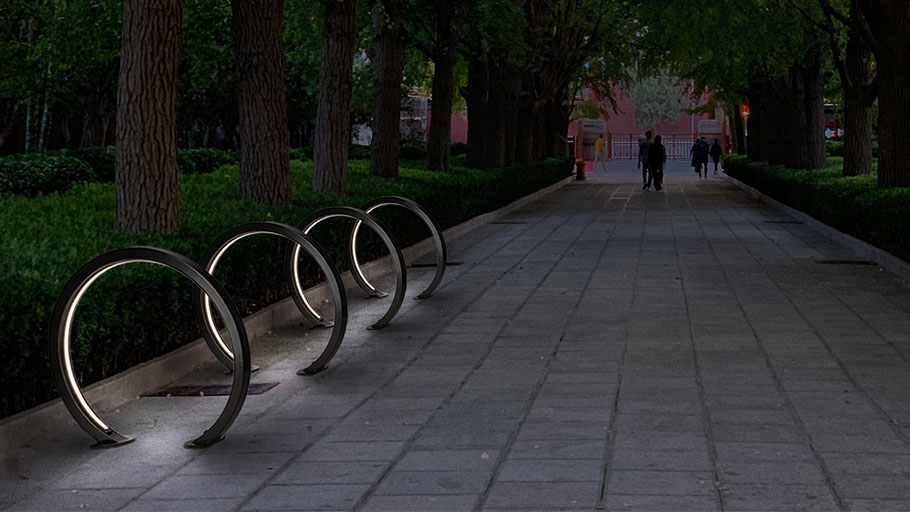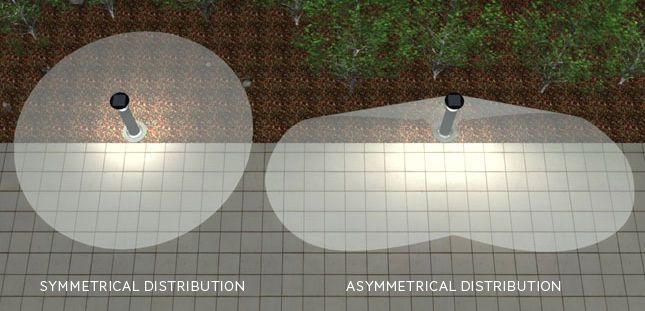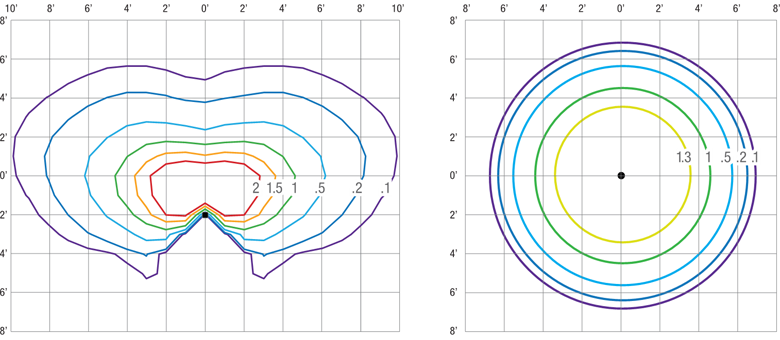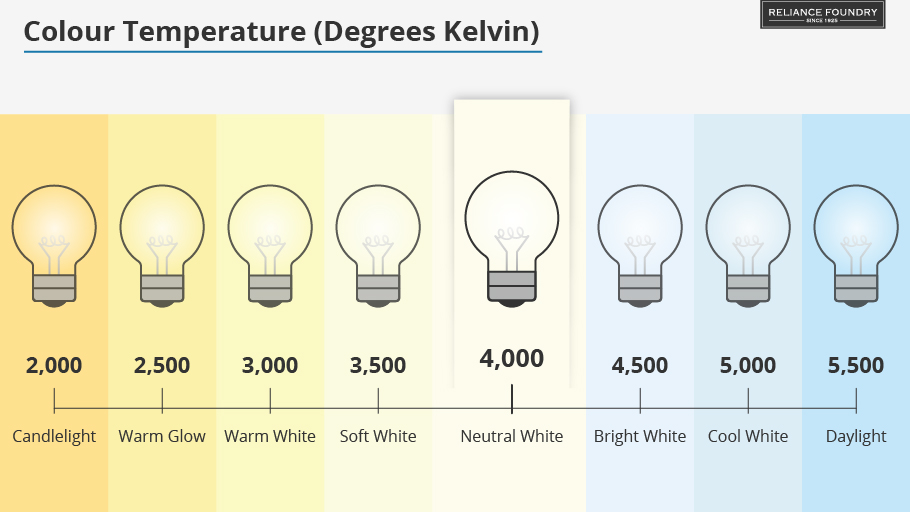Photometric principles for solar and AC powered lighting

What Is Photometry?
Photometry as it relates to lighting design, is the science of quantifying and assessing the visible light as perceived by the human eye. Whether it’s solar or AC powered lighting, photometric principles play a pivotal role in determining how effectively a light source will illuminate its surroundings.
Common Units Used in Photometry
- Candela: Candela (cd) is a measure of luminous intensity, specifically in a particular direction. It quantifies the brightness of a light source in a specific direction, much like measuring how intense a flashlight beam appears when directed towards a surface.
- Lumens: Lumens (lm) represent the total amount of visible light emitted by a light source, regardless of its direction. It’s the standard unit for measuring the overall brightness or light output of a bulb or fixture. In simple terms, lumens indicate how bright a light source is.
- Foot Candle: A foot-candle (fc) is a unit of measurement used to determine the illuminance or brightness level on a one-square-foot surface that is evenly illuminated by a uniform light source. It helps assess the intensity of light on a specific area or surface.
Why Photometrics Matter
Photometrics are critical when selecting and installing lighting fixtures because they provide insights into how brightly a light will appear to observers. This information is essential for ensuring that the lighting system meets the visibility requirements of a particular area or space.
In the context of both solar and AC powered lighted bollards, several photometric considerations must be made during the selection and installation process to optimize performance:
Lighting Distribution
When examining photometric performance, it is necessary to understand lighting distribution. Light emitted from a bollard light can be delivered in different patterns: symmetrical and asymmetrical.
- Symmetrical lighting emits light evenly in a circular pattern, suitable for landscaping and confined areas.
- Asymmetrical Lighting delivers elongated light, making it ideal for pathways.
The choice of distribution pattern should align with the specific lighting needs of the area. The following diagram demonstrates how light from both patterns will fall on the surface surrounding a lighting bollard:

Luminous Flux
Luminous flux, measured in lumens, quantifies the total light output of a lighting fixture. It serves as an indicator of the fixture’s illumination capacity. However, it’s equally important to consider how the lumens are distributed, as this can change how bright a light is perceived to be. With a typical lumen output of 130, Reliance Foundry’s lighted products provide an industry-leading level of luminous flux.
Illuminance
Illuminance is a measurement of the intensity of light at various points within a lighting fixture’s distribution pattern. Light emitted from a lit bollard will appear more intense at certain points of distribution than others, with different distribution patterns offering varying levels of intensity at different points. Footcandles (lm/ft²) are used to measure the luminance cast on a surface by a one-candela source located one foot away. Designers should focus on average and minimum illuminance values and the uniformity ratio to ensure consistent lighting levels throughout the area. The following diagram demonstrates the differing points of light intensity throughout symmetrical and asymmetrical lighting distributions.

Lighting Intensity Measured in Foot Candles
For most bollard and bike rack lighting applications, the average and minimum illuminance values, and the maximum to minimum uniformity ratio for the area to be illuminated are of the most interest. Developing a lighting layout that takes both of these values into consideration will ensure that an adequate level of light will be provided and that there will be no breaks caused by lighting level drops. To obtain the minimum illuminance value and maximum to minimum uniformity ratio of your site, you may wish to consult a lighting specialist, engineer, or architect. Independently tested IES files are available. Please contact the Reliance Foundry Sales Department for more information.
Color Temperature
Color temperature refers to the perceived warmth or coolness of the light emitted by a light source, typically measured in Kelvin (K). Lower Kelvin values (e.g., 2700 K) indicate warmer, more yellowish light, akin to incandescent bulbs. Higher Kelvin values such as 5000 K, represent cooler, bluer light. The majority of Reliance Foundry’s lit products measure at 4000 K, which is a neutral or natural light.

Dark-Skies
The concept of “dark sky” lighting aims to reduce light pollution by controlling light delivery. Cut-off lighting fixtures control light delivery so that less than 2.5% of the light output is allowed to escape the fixture above 90 degrees. Cut-off lights contribute positively to a site’s lighting performance except in the areas required to be the darkest under the LEED rating system. For more information on how lighting design can help a project qualify for LEED credits, please visit the US Green Building Council’s guidelines on light pollution reduction.
Additional Considerations for Solar Powered Lighting
While many factors when choosing appropriate lighting apply to both solar and AC powered products, there are several terms that are only applicable to solar powered lighting.
Solar Insolation
The term solar insolation refers to the amount of sunlight that a solar fixture receives in one day. It is commonly measured in the number of hours the solar panel will be directly exposed to sunlight. The amount of sunlight the panel will receive will determine the level of power the bollard will have stored for use. The less sunlight a solar fixture receives, the less energy it will have to operate. Typical solar powered bollards will deliver light at full capacity until all stored energy has been consumed.
Please take note of the solar insolation of the planned installation location before purchasing or installing solar powered bollards. Each site is different and, although Reliance Foundry’s solar bollards expend energy efficiently, certain base levels of solar insolation are required to ensure that they operate effectively throughout the year.
Autonomy
Depending on the area in which a solar lighting bollard is installed, there may be days when it does not receive solar insolation, known as “no-sun days.” Because solar bollards operate with a battery that stores energy, they can still operate on no-sun days. This process is known as “autonomy.” The lighting system will ration energy to ensure that it will continue to operate throughout the night. With less solar insulation, there will be less light output.
Lighting Certifications for Bollards and Bike Racks
When it comes to lighting for bollards and bike racks, ensuring product performance, safety, and compliance with industry standards is important. Several certifications play a role in verifying the quality and reliability of these lighting systems. Here, we will explore key certifications that are relevant to lighted bollards and bike racks.
UL Certification (Underwriters Laboratories)
Underwriters Laboratories is an organization that sets safety and performance standards used across various industries. A UL listed product indicates that it has met the safety standards in the U.S. set by Underwriters Laboratories. The “cULus” marking signifies compliance with safety standards in both Canada and the U.S. These certifications ensure that AC-powered bollards and bike racks are safe for installation in various environments.
UL certification includes markings for different installation locations:
- Dry Locations: Suitable for indoor use in above-ground rooms like bedrooms and kitchens.
- Damp Locations: Approved for use in areas exposed to moisture, excluding direct exposure to snow or rain. Suitable for outdoor use with appropriate coverings.
- Wet Locations: Fixtures can be installed anywhere and can come in direct contact with most types of liquids.
RoHS Certification (Restriction of Hazardous Substances)
RoHS compliance ensures that electrical and electronic devices are free from hazardous substances that can harm the environment and human health. This is particularly important for sustainable and eco-friendly lighting solutions.
RoHS sets maximum levels to restrict the use of hazardous materials, including Cadmium, Lead, Mercury, Hexavalent Chromium, Polybrominated Biphenyls, Polybrominated Diphenyl Ethers, and four types of phthalates in electronic devices including lights.
IP Ratings (Ingress Protection)
IP (Ingress Protection) ratings define the level of protection a device has against external factors like debris, dirt, and different forms of liquid.
Relevant IP ratings for bollards and bike rack lighting include:
- IP65: Dust tight and protected against water projected from a low-pressure source from multiple directions.
- IP66: Dust tight and protected against projected from powerful jets from multiple directions.
- IP67: Dust tight and protected against immersion in water for 30 minutes at depths of 5.9″ to 39.4″ (150 mm to 1000 mm).
- IP68: Dust tight and protected against continuous submersion in water at a minimum depth of 3 feet.
These certifications ensure that lit bollards and bike racks are not only safe for use but also environmentally friendly, resistant to various environmental factors, and compliant with international standards. It’s worth noting that Reliance Foundry’s AC-powered bollards and bike racks feature UL-certified power adapters, further enhancing their safety and compliance with industry standards.
